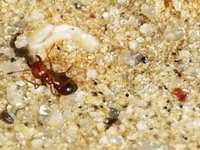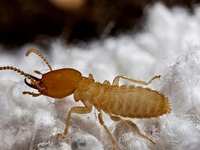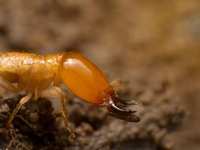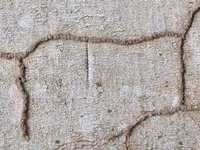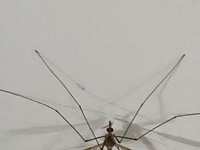Webworm caterpillar webs

As Spring transitions into Summer, residents will start to see the appearance of webworm caterpillar webs. You might first notice the appearance of large, silken webs enveloping tree branches and shrubs. Understanding webworm caterpillars’ behavior, life cycle, and management can help homeowners and gardeners protect their plants and maintain healthy gardens.
What Are Webworm Caterpillar webs?
Springtime webworm caterpillars are the larval stage of the fall webworm moth. These caterpillars are notorious for creating large, unsightly webs on trees and shrubs. While they are commonly found on hardwood trees, shrubs and various fruit trees, they can infest a wide range of plant species. In and around the Houston area and its suburbs, the first generation of webworm caterpillars typically appears in late spring. Still, it is the second generation, emerging in July, that often causes the most damage. This generation is larger and more voracious, capable of defoliating significant portions of trees if left unchecked.
Life Cycle of Webworm Caterpillars
Webworm caterpillars usually start appearing in late spring to early summer. The adult moths lay clusters of eggs on the underside of leaves. These eggs hatch into tiny caterpillars that begin spinning webs around the foliage where they were born. These webs protect the caterpillars from predators and environmental elements, allowing them to feed safely within their silken enclosures.
Impact of Webworm Caterpillar Webs on Trees
The webs themselves are not harmful, but the caterpillars inside can cause significant damage by feeding on the leaves of the host trees. This defoliation can weaken trees, making them more susceptible to disease and other pests. Commonly affected trees in our area include pecan, persimmon, and various fruit and ornamental trees. Additionally, the presence of large webs can be aesthetically displeasing, detracting from the beauty of gardens and landscapes.
Managing webworm caterpillar webs effectively requires a combination of preventive and active control measures:
- Monitoring: Regularly inspect your trees and shrubs for signs of webworm activity. Early detection can help you manage infestations before they become severe.
- Mechanical Control: In small shrubs and trees, remove and destroy webs manually when they are small and accessible. This can be done by pruning infested branches or using a stick or rake to pull down the webs. Be sure to dispose of the caterpillars and webs away from your garden.
- Biological Control: Encourage natural predators, such as birds and beneficial insects, which can help keep webworm populations in check. You can attract these predators by planting a diverse array of native plants.
- Chemical Control: If infestations are severe, you may need to resort to insecticides. Use products specifically labeled for webworms and follow all application instructions carefully to minimize harm to beneficial insects and the environment.
- Cultural Practices: Maintain tree health through proper watering, mulching, and fertilization. Healthy trees are more resilient to pest damage.
Looking ahead
Webworm caterpillars are a common summer nuisance in The Woodlands, Spring and its neighboring cities. By understanding their life cycle and implementing effective management strategies, you can help mitigate their impact. Staying vigilant and proactive in your pest management efforts will ensure that your garden remains a beautiful and thriving part of your home.
For more tips on pest control and dealing with webworms or other pests, contact us at 936-249-0917. Together, we can keep our environment healthy and our homes pest-free!




